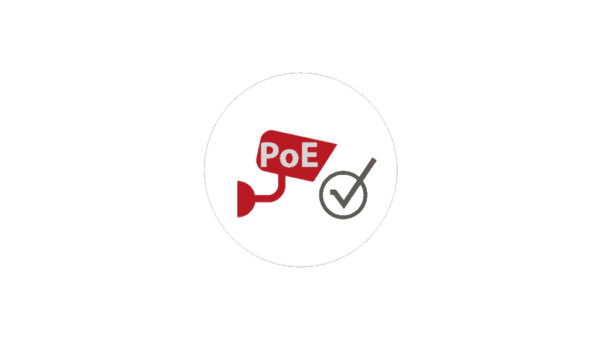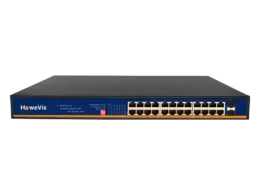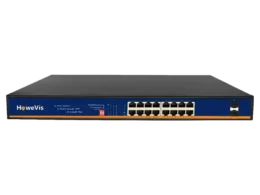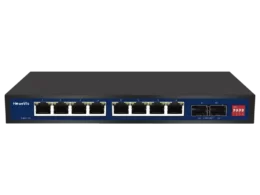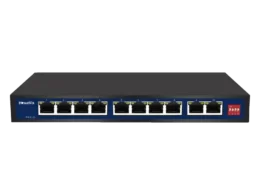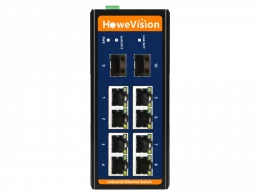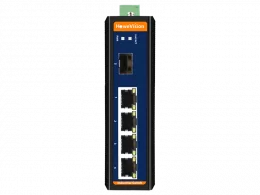Power over Ethernet technology enables you to send both power and data to devices simultaneously. You can send data up to 1000 MBPS with 15–90-watt power, depending on a device’s requirement.
It’s a simple technology. If you use equipment like PoE switches, you can easily manage power transmission to devices.
Why Should You Get Power Over Ethernet?
Organizations keep running with old network infrastructures because upgrading a network infrastructure is cumbersome. At the same time, many users have a common query in their mind – Is Power over Ethernet Good?
Well, The PoE upgrade is the easiest. That’s because it gives you a space to boost the capacity of your network with minimal effort.
The below points will explain why getting Power over Ethernet is beneficial to you.
Affordable Installation
The cost of PoE cables is much less than conventional copper cables. Also, PoE network infrastructure negates the duplicity of wires. The same Cat5e line can carry both data and power.
Moreover, it opens an option for organizations to employ more and more remote devices. Because with PoE setup, you don’t need an electric point with every device that you install.
When you put together all these factors, it makes more sense that PoE installation is very cost-effective.
Easy Deployment
Deployment of the PoE network solutions is effortless. Anyone with minimal networking knowledge can use these solutions. PoE is highly adaptable. With the changing needs of your organization, you can modify them. All you need is a PoE switch aligning with your organizational needs.
Also, you can adopt PoE without affecting the operational efficiency of your organization.
Access to Data Collection Tools
PoE technology offers you an option to access quality data analytics software. The tools that give you information as well as control.
Thus, you can easily fetch the status of HVAC appliances and lighting. As a result, troubleshooting becomes more manageable. And with data at your disposal, you can use the same electric appliances more efficiently.
A Boost to Productivity
With increasing digitization, there is a need for more innovative workplaces. Contrary to the popular opinion that digitization of processes will create more lazy employees, getting Power over Ethernet will boost productivity.
PoE is vital for this change. All IOT appliances, from Smart LED lights to air quality monitors, need PoE.
According to the report, the global market of Smart office spaces will reach around $58 billion by 2025. So, this figure shows why getting Power over Ethernet is more critical.
How to Get Power Over Ethernet?
All Ethernet Cables are employable in PoE. But if you want to transmit data exceeding 10 Mbps. The minimum requirement is Cat 5 enhanced cable, which can easily handle even Gigabit Ethernet. If you plan your network considering future needs, you can go with Category 6 augmented or Category 7 cables.
After you have clarity on which cable you will use, start your hunt for the right PoE switch or injector. You might ask – Do I need a PoE switch? Well, you will need it. PoE switch is the tool that enables you to push power over Ethernet cables. Moreover, PoE switches give you a lot of control over data transmission as well. Their role is certainly not limited to only the management of power over Ethernet.
You don’t necessarily need to go with the most innovative PoE switch, which offers features like remote network control, etc. There are many options available. You can align these switches with your network up-gradation budget.
All PoE switches are good enough to perform power management functions. You can employ PoE switches with multiple network schemes. If you categorize PoE switches in terms of power management features, you get two types of PoE switches: Active and Passive switches.
Active switches can gauge whether the device connected to it supports PoE or not. They send a shallow voltage current to do this primary check. So, with active switches, you almost negate the possibility of any potential damage to network devices.
While passive PoE switches directly transmit DC power to network devices, they cannot check if the device is PoE enabled or not. It’ll be great if you can go with active PoE switches. But if you are short on budget, you can go with passive controls as well. To keep your network devices safe, you can employ a PoE splitter between switches and devices.
PoE splitters do precisely what their name describes. They split data and power. Besides, they have two outputs; if you connect it to a network device that does not need power, you can join only the data output line.
FAQ – Getting Power Over Ethernet!
Now that you know how to get Power over Ethernet let’s check out some commonly asked questions in this regime.
What Is the Furthest Distance That PoE Can Transmit Power?
Power over Ethernet can push electric power up to 100 hundred meters. It’s independent of the fact that you provide current to PoE switches. Moreover, it does not correlate with the power handling capacity of a PoE switch.
The limitation lies with Ethernet cables. Suppose you are using a PoE switch that runs on IEEE 802.3af standard. And it provides you with an output of 15-16 watts, after 100 meters you can’t access the same amount of power.
But there are ways to curb this limitation of Ethernet cables. The most popular of the lot is the PoE extender. It’s a small device. So, if you inject it after an exact 100 M distance, you can extend the power access to about 4000 meters.
What Is Device Compatibility to Get Power Over Ethernet?
Device compatibility is nothing but the network devices that comply with PoE standards. The devices that do not qualify for this compatibility test need a PoE injector to receive data from switches.
But if you use managed PoE switches, you don’t need to insert this extra equipment. That’s because managed PoE switches can automatically detect non-compatible devices and control data transmission.
What Is the Per-Port Power Delivery of POE?
Per-port power delivery has a direct connection with PoE standards. As we advance in this piece, we will connect these dots. First things first, it is crucial for commercial buyers that they understand their needs. There is a term called “power budget.” Do look for it while buying a PoE switch specifically.
Power budget refers to the total amount of power a controller can transmit to devices. So, if you want to calculate per port power delivery, divide the power budget by the number of ports the PoE switch has.
How Much Power Can POE Deliver?
As we discussed, the power supply of PoE has a direct relation to the PoE standard. The latest PoE models belong to the IEEE803.3 standard.
All the PoE standards have a life cycle and different extensions. af, at, bt, POE+, and UPoE are these extensions.
Devices with the “af” extension have a power budget of 15.4W while “at” delivers 30.8W current. The controllers with the “bt” extension have two types: 3 and 4. With type 3, you get 60 W, and Type 4 offers about 90-95W.
What Is 90W PoE?
There is a lot of talk around 90 W PoE. All the talk is justified. Never in history, had anyone imagined that Ethernet cables could transmit the power of this scale. Now they can do it along with the internet as fast as 1GB per second. You can access up to 95 W power with the latest type 4 IEEE803.3bt standard, as we mentioned earlier as well.
90W power budget PoE is helpful for Smart workplaces. All IOT-based bright lighting monitors work on 90W PoE only. So, the potential is enormous. With this, you can power large-screen television and High-quality VC cameras.
Final Thoughts!
Power over Ethernet is one of those rare technologies that kept evolving with time. Even in its current avatar, it has a huge role in industrial operations and commercial spaces. The effective use of sensors and IP cameras allows managers to supervise work processes effectively.
High-power budget Ethernet is making the technology even more powerful. Also, the security and power distribution feature that PoE switches bring makes PoE a must-have!
